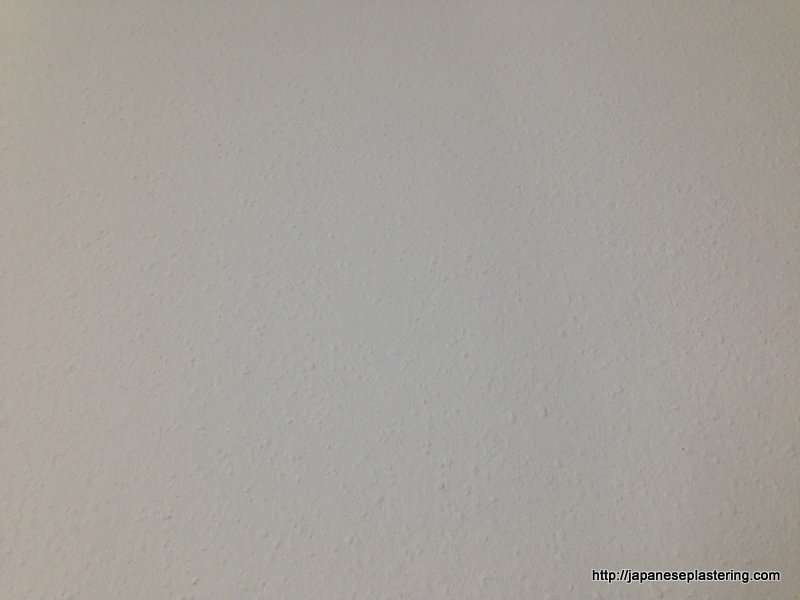Japanese Finishes
Earth, lime, plant fibers, sands and aggregates are the most common constituents in Japanese plasters. During the Meiji period, gypsum and cement were also introduced to Japan from the West.
Interior and Exterior Finishes
Polished Otsu (earth, hydrated lime, paper fibers)
Compressed Otsu (earth, hydrated lime, hemp fibers)
The walls of traditional Japanese homes are created by applying an earthen plaster to a bamboo lattice. In areas of high contact with earthen walls, such as entrance ways and stair cases, a more abrasion resistant plaster is desired. Shikkui is an obvious choice, but pigment and lime were valuable commodities in pre-industrial Japan. Shikkui requires a relatively large amount of pigment to provide color, and quick and hydrated limes require vast amounts of energy to burn lime stone. Otsu provides an abrasion resistant finish with the possibility of using local clays.
Mizugone (earth, fine sand, fine straw fibers)
Mizugone is the pinnacle of Japanese finishes, requiring incredible skill to execute correctly. Because of its modest and delicate appearance, it is the most desired finish for tea houses and Japanese rooms. Clay and sand are sifted through a 1mm sieve.
Juraku Mizugone (Juraku soil, fine sand, fine straw fibers)
Juraku soil is the clay native to Kyoto and used to plaster Sen no Rikyu's tea house in the 16 century. Because of its strength, water resistance, and un-expansiveness, Juraku soil is the preferred clay soil in central Japan.
Juraku Norigone (Juraku soil, fine sand, fine straw fibers, seaweed glue)
Seaweed glue is added to retrain moisture, inhibit drying and improve workability. Clay and sand are sifted through a 1mm sieve.
Kirikaeshi Finish (earth, sand, straw fibers)
The clay and sand of a kirikaeshi finish is sifted through a 3mm sieve, using slightly coarser clay, sand and straw than Mizugone, but finer than a nakanuri brown coat (5mm sieve).
Hikizuri (earth, sand, fiber, seaweed glue)
Arakabe Finish (clay soil, chopped straw)
Firefly Finish (clay, sand, straw fibers)
Iron flakes are added to an earthen plaster containing sulfur. With swings in relative humidity, the iron flakes will begin to rust. However, the sulfur in the earth inhibits rusting and creates light spots around the iron fragments. If the relative humidity of the room is too stable, the firefly phenomenon will not occur. Swings in RH are required. The reason is, presumably, because through the process of absorbing and giving off water vapor, sulfur and other dissolved minerals are brought to the wall surface.
Kyosabi Finish (clay, sand, straw fibers, iron frangments)
Iron fragments are added to the plaster mix, which rust over time creating an earthen finish speckled with rust.
Hainaka (earth, hydrated lime, sand, straw fibers)
Scratched Earth-Cement (cement, earth, lime, sand, pigment, straw fibers)
Before the cement fully hardens, the plaster is scratched with a wire brush, providing a natural earth plaster appearance, but having the resiliency of a cement reenforced plaster.
Tataki (sandy soil, hydrated lime, magnesium chloride)
Exposed Aggregate (cement, aggregate)
Harling Finish (cement, aggregate)
Namako Kabe (Shikkui)
Tosa Shikkui
Originating from Tosa, Kochi Prefecture, famous for its Typhoons, Tosa Shikkui is known for is weather resistance. Unlike common Shikkui, Tosa Shikkui is fermented with chop straw which gives it its slight yellow color. Generally Tosa Shikkui is applied thicker than common Shikkui and compressed.
Parari Finish (not compressed Shikkui)
Colored Clays
The defining characteristic of plastering in Kyoto is the use of color clays. The Kansai area of Japan is blessed with a variety of colored clays and these where incorporated into earthen plasters hundreds of years ago.
 |
 |
 |
 |
 |
 |
 |
 |
 |
 |
 |























